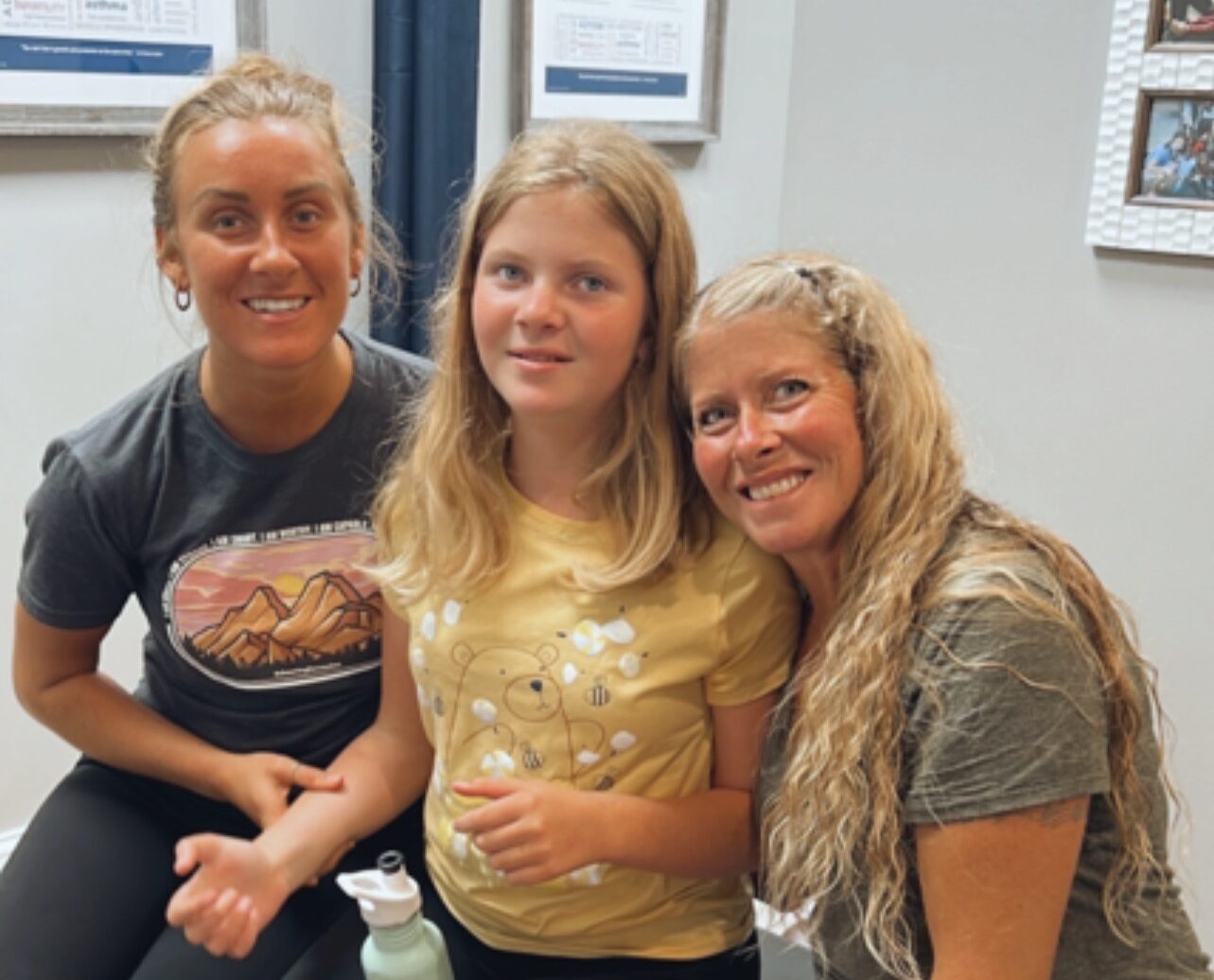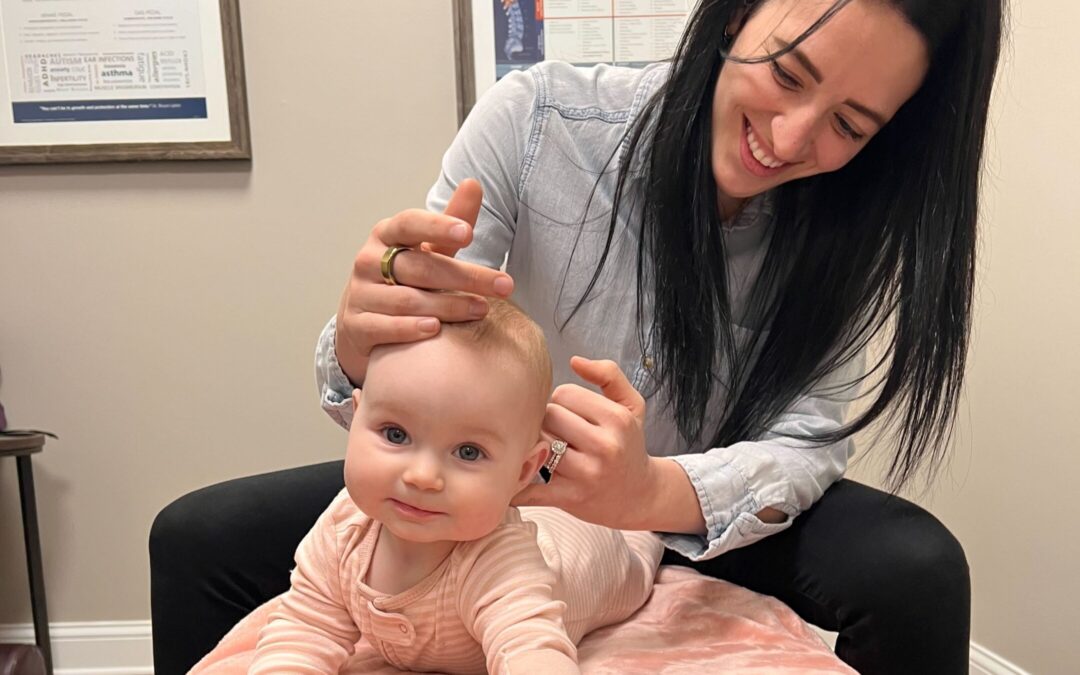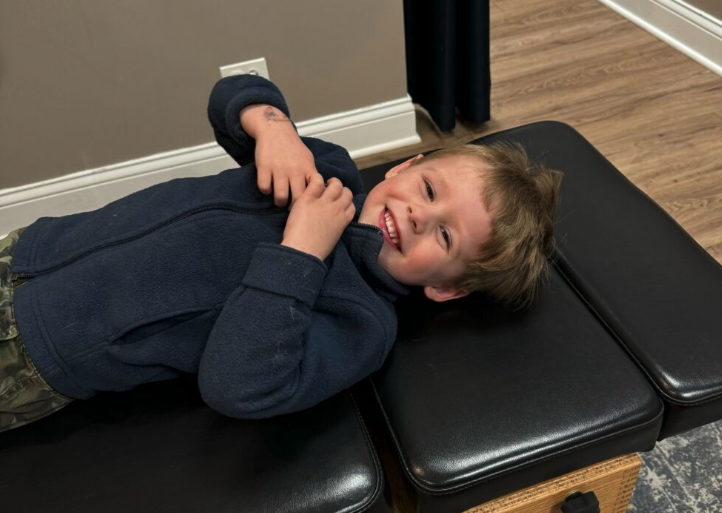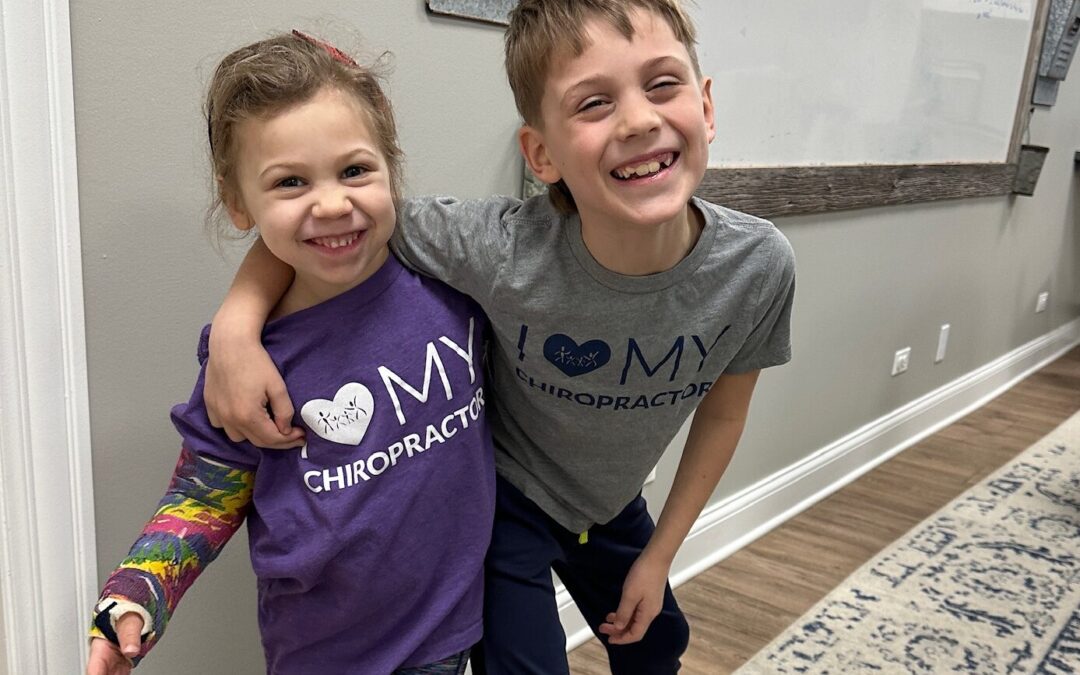Often times when I am in the community and introduce myself as a Pediatric Chiropractor, I get quite a few puzzled looks as if I’d just made up a new profession.
The truth is pediatric chiropractic is growing by leaps and bounds, and the results we are getting are astounding. This generation of parents truly has tired of the idea of “better health through chemistry” and the results of traditional medicine (the sickest generation of kids we’ve ever seen), and are looking towards cause-based care models like chiropractic left and right! We truly are seeing the pendulum swing in that direction, and soon the health of our kids will improve and come along with it!
One of the primary areas our practice focuses on is helping children with autism and other spectrum-related disorders. This all began back in 2008, when I first started to study the science behind spectrum and neurosensory challenges and saw a “perfect storm” pattern emerge in case after case… that was rather easily explained by new models of neuroscience that were emerging at the exact same time as the autism pandemic was as well.
Understanding this “Perfect Storm” and sorting through the “ingredients” that trigger it holds the key to then being able to know how to best unlock, unwind, and restore health to these amazing kiddos who so often and so early get “locked into” this spectrum.
Autism was originally described in the 1950s as just that, “locked-in” syndrome – which is what led doctors to hint at an Autism diagnosis in Koen’s case. But our scientific and care model looks at it from the other lens, really seeing it as a “locked out” challenge… where due to the early exposure to distress and toxicity, these kids are “locked out” of the optimal, healthy life they were designed to live.
If genetics and more diagnoses were really the answer, we’d be writing about that in this article. However, our clinical experience and the research articles tagged below in this article really point to this “Perfect Storm” of sensory and spectrum disorders being linked to disruptions and challenges our children face early in the developmental period, that then send them down the “path” of this storm… instead of of the path of optimal, ideal health.
But before you read on and dive deep into the science and role of chiropractic in these kids, parents, please know this – kids are designed to heal. Children have incredible levels of what is called “neuroplasticity” left in their brain and nervous system, which is why over these past 10+ years, we’ve seen so many incredible changes with “Perfect Storm” cases not only in our office but in the hundreds of other trained Perfect Storm Centers as well!
Heads up! This is a very lengthy explanation, but if there is one thing I have learned in my years of helping parents whose children suffer with autism, it is that “no amount of information or help is too much” for their children. Get ready for some Hope, Answers, and Help!
How Can Pediatric Chiropractic Care Help With Autism?
First, I’d like to focus on a very important word in this article – help.
Pediatric Chiropractic is NOT a treatment, cure, or anything for autism, sensory challenges, ADHD, anxiety, or anything in between. Heck, chiropractic doesn’t even cure back pain or neck pain.
Chiropractic works from a ‘Care’ Model, by which we focus on restoring balance and function to the Central or Autonomic Nervous System… which by design has an absolutely incredible capacity to help and heal all on its own.
The chiropractor does not do the healing – neurology does.
It may sound theoretical and philosophical, but really it’s just scientific.
Ok, just get to it already, right? How does it help?!
Well, as is the case with so many questions, the response to this one is going to be multi-faceted. However, it will certainly have one recurring theme throughout… the answer lies within the Central Nervous System.
Anyone who knows anything about autism knows that the nervous system is greatly affected by this disorder. The challenges this brings about are responsible for many of the issues seen in children with autism.
Things such as hyperactivity, attention issues, sleep challenges, behavior problems, social issues, sensory processing issues, and more.
In addition, the nervous system is so intimately linked with the digestive and immune systems (the other two systems most commonly affected in autism) that it can also contribute to things such as significant digestive and ‘gut’ issues, autoimmune challenges, and more.
From here on out, we will look at these systems in a “triangular” sort of approach, with the nervous system being the crucial link between them.
Let us first start with possible ways the nervous system can be distorted, damaged, and dysfunctional. There are numerous ways to discuss, so we will focus on the three (3) major “ingredients” of the “Perfect Storm” we have found over and over in thousands of cases (and the ones most commonly linked in the latest scientific research).
These 3 Common “Ingredients” of The Perfect Storm are:
- Maternal Stress During the Prenatal Period
- Birth Intervention
- Frequent Illness and Medication Use in Infancy & Toddler Stage
While #3 is finally getting discussed more frequently in journals and health care, the first two are still grossly overlooked and unknown.
When it comes to caring for our pregnant mothers in the current healthcare landscape, it really focuses mainly on medical management (weight, BP, ultrasound, etc.) and the avoidance of toxins and chemicals (alcohol, cigarettes, BPA, pesticides, etc.). And while those are two very important things to have as part of the Perinatal Care Model, it completely misses the most important piece of care our mothers need – mental and emotional empowerment and support.
We literally scare the ever-living heck out of our moms about the entire thing. We tell them pregnancy will be miserable, birth painful, and, oh man… just wait until that baby comes! The “bundle of joy” perspective is replaced with the medical diagnosis and fear machine. Have you ever read “What to Expect When Expecting?” It’s an absolutely terrifying book you’d think was written by Stephen King!
The reason this is so problematic is that simply put, those high levels of stress are passed onto the developing baby in-utero. The umbilical cord is not just there to pass along nutrients and oxygen, but it’s also the power cord that connects the mother’s nervous system and emotions to the developing baby’s brain and nervous system.
If the majority of that period is spent under high amounts of stress and anxiety, the baby’s brain becomes “pre-wired” and more susceptible to the same.
One other reason I first described it as a “Perfect Storm” is that each initial ingredient leads to a greater likelihood of the next one (and the next one…). In this case, if an expecting mother is under high amounts of stress throughout the pregnancy, it makes it much harder for her nervous system to allow for the relaxation and process of natural birth.
This then starts a cascade of the increased likelihood of birth interventions such as induction, epidural, vacuum extraction, forceps, or C-section. From Year One of our Perfect Storm work to today, the #1 most common “ingredient” we find in the case history of kids struggling with spectrum disorders is this – birth intervention.
As a general rule, the more intervention – the more stress, trouble, and dysfunction.
Early on, this looks like difficulty latching and nursing, torticollis and plagiocephaly, reflux, colic, constipation, eczema, croup, and recurrent ear infections. Which, as you can see right away, then blends immediately into #3 listed above.
Unfortunately, in the United States, we have levels of birth intervention that even the WHO has termed to be at “epidemic” levels, especially the use of Cesarean delivery. The WHO states that C-section rates around 10% are normal and necessary, while anything above 15-20% “likely does more harm than good” – in the US, the current rate is 31%.
It must also be realized that even most vaginal deliveries are now induced or “augmented” as well.
A recent study in the journal Pediatrics showed an increase in autism later on in life for induced births, confirming what we’ve been talking about in pediatric chiropractic for a long, long time. Below you will find a whole run of research articles linking birth intervention to negative or adverse health outcomes for the baby later on in life, some linking it all the way to obesity and challenges in teenage and adulthood.
Diving Deeper Into Birth Intervention And Injury
The most commonly injured (subluxated) area during the birth process is the upper neck and skull. The risk of injury to these areas, and the resultant issues from it, go up exponentially as intervention levels go up. C-sections, forceps, vacuum extraction, and prolonged pushing all lead to a greater risk of traumatic birth injury to the infant’s head and neck, and really the entire neuro spinal and neuromotor system.
This area houses and protects the brainstem and cerebellum, which amongst many other things, is primarily related to controlling and modulating the sensorimotor system – vision, vestibular (balance), and overall neuromotor tone and coordination.
Therefore, when this is “thrown off track” right in the very first moments of life outside of the womb… the child’s neurodevelopment is immediately “thrown off track” as well.
Unfortunately, no one in the medical system is really trained to check (or address) these sorts of injuries, so most of the time, they go completely unmentioned to the parents. It is our belief that if the injury (subluxation) were addressed by a pediatric chiropractor shortly after it occurred, most of the neurological injuries associated with it could be prevented.
This upper cervical subluxation especially leads to improper neurological “signaling” or “communication” into and out of the central nervous system. This challenge to the communication system of the body is one of the primary reasons so many children with autism have challenges with sensory processing, social interaction and behavior, and learning.
As Princeton Researcher Dr. Samuel Wang puts it, “disruption or distortion” of neurological signaling throughout the brain and body’s nervous system is what is likely causing the entire “perfect storm” of various challenges seen with autism – motor, digestive, immune, social, emotional, behavioral, communication, auditory, and more.
The foundational challenge within this neurological storm is that it puts the nervous system into a chronic or permanent state of sympathetic stress. This is often referred to as the stress response or fight/flight response. It is a response that is vital for short-term reactions but detrimental when “stuck on” for extended periods of time. Most children with autism have been in fight/flight from their first moments on. This is why we see such a high correlation with infantile colic, ear infections, digestive disorders, and autism.
Again, if our health care system were designed to address these challenges immediately, rather than waiting for the symptoms to appear, far fewer children would be suffering with autism and related disorders. One can simply observe a child with autism and see the “stress and fear” in their eyes.
Is this any different than the infant with colic struggling to soothe, calm, and sleep?
Do those colicky infants really “grow out of it,” or do they “grow into” sensory, spectrum, and other chronic health challenges if the root cause(s) are not addressed?
It is such a joy to see this look change in their eyes as they progress through care in our office. Once we begin making specific, gentle, neurologically focused adjustments to our spectrum kiddos, we start to see more calm, more coordination, more perception, and in time, even more communication!
What Else Is Involved? Neuro-Gastro-Immunology Discussion
Getting back to our triangle example, this chronic state of neurological sympathetic stress (subluxation) wreaks havoc on the immune and digestive systems, as both of them are “down-regulated” during chronic states of stress. Speaking specifically about the digestive system, sustained neurological stress responses can lead to an increase in decreased motility, constriction, cramping, and inflammation. When the digestive system is in this state, it does a very poor job of breaking down foods and other substances, leading to even further inflammation and irritation that can spill over into the bloodstream and cause an immune response.
This is not only why so many spectrum and sensory kiddos struggle with digestive complaints but also why for parents, it can feel like hitting their head against a wall trying to get their child to eat healthy foods and take vitamins or supplements. Healthy foods are actually far more difficult to break down and digest than unhealthy and processed foods, so spectrum and sensory children often develop an aversion to these foods.
This is one of the many welcome and celebrated “side effects” of neurologically-focused, pediatric chiropractic care – once the autonomic nervous system is calmer and functions better, it can better digest and tolerate healthy, complex foods. Yet another reason why chiropractic needs to be the first foundational step in helping these kids heal!
And lastly, the immune system faces the same challenges as the gut. When we are in a constant state of neurological stress, the immune system also gets out of balance and leaves a child susceptible to more frequent colds, congestion, infections, allergies, asthma, eczema, and other inflammatory-type reactions.
All of this leads to more and more inflammation and irritation, and the cycle continues. This is why so many of these reactions and challenges are what we refer to as “viscous cycles” that essentially continue to feed each other and lead to greater and greater challenges. Somewhere, this cycle must be broken, and that is where chiropractic adjustments come into play.
Essentially the body becomes “constipated” in all of these three (3) major systems – neurological, digestive, and immune. Our children are left “stuck” with hyperactivity, anxiousness, impulsiveness, toxins, and illness.
The Vagus Nerve
One last wildly important element we have not mentioned and explained yet is the role of the Vagus Nerve in all of this! Nicknamed “The Wandering Nerve,” this incredible nerve has direct connections to literally everything we’ve spoken about in this article.
It’s classified as a cranial nerve, meaning it branches from inside the skull, specifically from the brainstem area we spoke about before that is so susceptible to trauma and toxicity at birth and early on. The Vagus nerve leaves the cranial vault and passes down through the neck, all the way into the abdomen (gut).
It has always also been nicknamed the “rest and digest” nerve, as it’s a parasympathetic nerve. This means it counteracts or opposes the sympathetic, fight-or-flight system we’ve been talking about as being excessively active in spectrum children this whole time.
But now, recent neuroscience has shown us that not only is the Vagus Nerve heavily involved in classic functions like digestive, slowing our heart rate, and breathing mechanisms, but also these key functions linked to common challenges seen with autism spectrum disorder:
- Neuro-Immune Function and Balance
- Social Connections and Communication
- Behavioral and Emotional Regulation
Neuroscience researcher Dr. Steven Porges refers to these other important branches of the Vagus Nerve as the “smart” and “social” vagus, linking it to challenges very present in autism – cognitive, emotional, social, and behavioral recognition.
So truly, the Vagus Nerve holds the absolute key to unlocking and improving the health outcomes of the “Perfect Storm” spectrum and sensory children!
How Do You “Fix” This And Help My Child?
By addressing the injury and resultant subluxations (stuck, sustained, sympathetic stress), a series of specific, neurologically-focused chiropractic adjustments seek to restore proper balance and function to the Central and Autonomic Nervous System.
The most important elements for a trained and ready PX Doctor to figure out are:
- Is this child subluxated?
- If yes, how much (quantify or ‘score’ the level of stress and imbalance)
- If yes, where are the ‘major’ or ‘primary’ subluxations?
These neurological stress scans are essential to providing the best quality of care possible for your child. They truly are the map or blueprint by which we can create a specific, customized Care Plan and adjusting approach for your child. No guessing, full testing.
Our Insight Scan Technology is truly cutting edge, and not only are they crucial for getting the best starting plan for your child, but the best part is also that we can continue to run these Insight Scans every 2-6 weeks as care continues. This allows us to measure the exact change and progress we are making with your child’s autonomic nervous system and continue to adapt and adjust our approach (pun very intended) at all times to make sure we are getting absolute max results!
Most spectrum cases require a significant amount of care upfront, often beginning with 3x per week adjustments and, for tougher cases, daily care. This schedule of care fits right within the science and neurology we’ve been speaking to with this entire article, known as neuroplasticity.
In this work, time and frequency are everything. We have to adjust with enough frequency in the early stages of care to get the sustained sympathetic storm in the child’s nervous system to unlock and release, and then continue care with enough duration for these neuroplastic changes to actually take root and stick!
That’s perhaps the most exciting, incredible thing about pediatric chiropractic care for autism spectrum disorders – the longer-lasting change it can have! The real incredible, miracle-level results that we’ve seen for a decade-plus come as the months and even years of care stack up!
Growth Versus Protection
In summary, almost every child we see with spectrum disorders has two major challenges at the root of their issues:
- An overstressed nervous system that is stuck on the “gas pedal” and thus in protection mode right from the beginning of life or even before
- An underactive and “shut down” parasympathetic, Vagus nerve calming, developing, health-promoting side of the nervous system!
There is a fantastic quote by Dr. Bruce Lipton that perfectly summarizes both the cause behind the issue and, if we really understand it, the solution as well.
His quote states, “You can’t be in growth and protection at the same time.”
Translated to our analogy here, a child’s nervous system cannot be on the “gas pedal” (stress/protection) at the same time as it’s on the “brake pedal” (growth/development/organization/healing). A subluxation, specifically to the upper neck and brainstem area, “locks in” the nervous system to that stress mode… thus “locking out” that child from their full potential and highest quality of life!
A specifically PX-trained pediatric chiropractor is the only provider on the planet trained to find and locate that subluxation and, if found, correct and resolve it appropriately. Doing so is analogous to hitting “reset” on the storm they are stuck in and then “pumping the brakes” and, in time, getting the growth, relaxation, and healing system working again!
It’s Never Too Late
A specifically PX-trained pediatric chiropractor is the only provider on the planet trained to find and locate that subluxation and, if found, correct and resolve it. Doing so is analogous to “pumping the brakes” and getting the growth, relaxation, and healing system working again!
While we absolutely do see earlier, often larger changes with younger children (more neuroplasticity to work with), Dr. Tony spent his first 3 years of Perfect Storm work almost exclusively working with high school to young adult-aged cases where the parents and providers had truly tried every single medication, therapy, diet, supplement, detox, and more.
10+ years ago, families turned to Pediatric Chiropractic as a “last resort” effort, and they saw results!
So whether you are reading this with a newly diagnosed 3-year-old, a not-yet diagnosed toddler, or a 19-year-old young adult child… we are here to help! We simply need to find and measure your child’s subluxation and neurological stress with our incredible Insight Scans, then sit down with you in partnership to build a customized, personalized Care Plan to get your child to their absolute best health and best quality of life!





